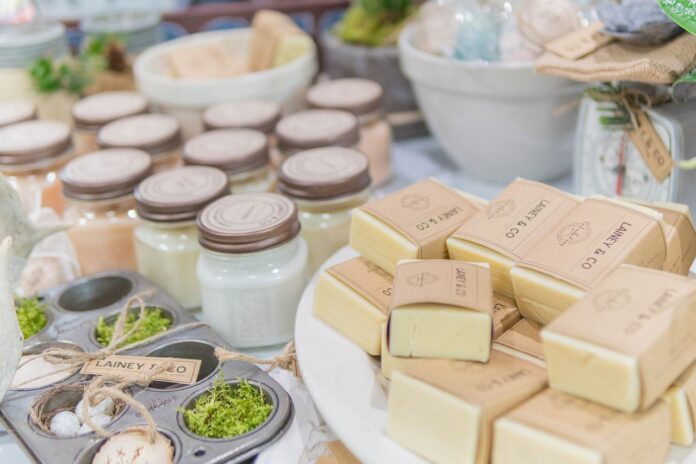For us, soap is a familiar hygiene product that we use daily. We never think about its value, as we can purchase it for a relatively low price. However, during the Middle Ages, using soap was a true privilege, accessible only to the upper classes of society. Back then, soap was literally worth its weight in gold.
A Happy Accident
It’s unclear exactly when or where people first began caring for the cleanliness of their faces, hands, and bodies. It is believed that this important event took place about 5,000 years ago in the Sumerian kingdom.
At that time, paganism and the blind worship of multiple gods, which required endless sacrifices, were prevalent. At the foot of a mountain, people built an altar where they would light large bonfires and burn animals in honor of the gods. The fat and ashes from these sacrifices mixed and flowed into the river.
When men performed these rituals, the women went to wash clothes, knowing that the water would be soapy, and the clothes would become clean quickly with little effort. In essence, this was the first experience of using soap. No one invented it intentionally; its miraculous properties were discovered purely by accident.
Of course, this was far from the soap we use today, but it was a significant step forward in the path toward hygiene.
Interesting Facts About Soap
- Initially, soap was only produced in liquid form, and its recipe was kept a strict secret. Soap makers were even forbidden from communicating with ordinary people to avoid accidentally revealing the ingredients.
- “Old” soap was considered a higher quality product because it cleaned the skin better and caused less irritation. Therefore, like wine, soap required aging.
- Queen Isabella of Spain once confessed that she had used soap only twice in her life—at birth and when she was prepared for her wedding to the monarch.
- Until the 1930s, soap was an unaffordable luxury for most people in Europe, accessible only to the wealthy. Common folk used “lye,” a cheap homemade alternative (wood ash boiled in water and steamed in an oven).
- Arab nations were far ahead of Europeans in soap making. The Persian chemist Al-Razi wrote a treatise in the 8th century detailing soap production methods and providing numerous recipes.
- In Russia, the mass production of bar soap began only after the revolution. The city of Shuya, located in present-day Ivanovo Oblast, became the center of soap production. Remarkably, soap is featured on the town’s flag and coat of arms, a source of pride for the locals.
- Today, Russia produces more than 60,000 tons of toilet soap and almost as much household soap annually.
- On average, each Russian citizen uses seven bars of soap per year. However, this is considered insufficient, which is why schools in Russia actively promote cleanliness and personal hygiene.
- October 15 is celebrated as Global Handwashing Day.
“Soapy” Expressions
The Russian language contains several idioms related to soap. For example, instead of “punish,” people often say “to soap someone’s neck.” What’s the connection between punishment and washing? It turns out there is some. In the past, criminals were often sentenced to hanging. To carry out the sentence, a rope was wrapped around the neck and coated with soap to make it slide better.
The expression “to trade an awl for soap” means “to exchange one necessary tool for another.” Shoemakers needed a sharp tool made of iron to work successfully. Before use, the needle was coated with soap; without this, it was difficult to pierce holes. Therefore, losing either the awl or the soap was highly undesirable for the craftsman. This is where the phrase originated.
“Soap operas” are sentimental shows aimed at housewives. Originally broadcast on the radio, they were designed to be listened to while women did housework. These programs were often sponsored by soap and household product manufacturers.
